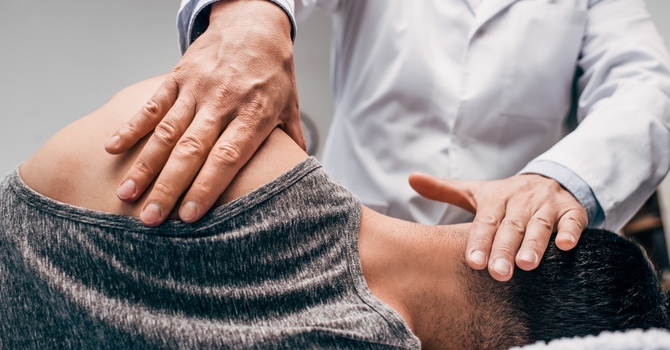Dry needling is becoming an increasingly popular treatment for a variety of musculoskeletal issues. By targeting trigger points in muscles, tendons, and ligaments, this technique can reduce pain, decrease inflammation, improve circulation, accelerate healing, and improve range of motion. If you're dealing with chronic pain, limited mobility, or muscle tension, dry needling may be a beneficial option for you. Here's a closer look at the key benefits of dry needling and how it works to help you feel better and recover faster.
1. Decreases Pain
One of the most immediate and notable benefits of dry needling is its ability to reduce pain. The technique specifically targets trigger points—hyperirritable spots in muscle tissue that cause pain when pressed or moved. Inserting a needle into these points can elicit a “twitch response,” which disrupts the motor endplate in the muscle, providing a pain-relieving effect. Additionally, dry needling reduces both peripheral and central sensitization to pain, allowing the body to process pain signals more effectively. By downregulating the nervous system, dry needling can help alleviate acute pain, especially after intense physical activity or injury (PMC, 2021).
2. Decreases Inflammation
Inflammation is often a significant factor in chronic pain and prolonged healing times, particularly in injuries involving tendons and ligaments. Dry needling helps reduce inflammation by increasing local circulation and promoting the influx of inflammatory cells to the affected area. This process repairs damaged tissue and interrupts the degenerative cycle, allowing for faster recovery. The ability to target areas with poor blood supply, such as tendons and ligaments, can make dry needling especially effective for conditions that tend to heal slowly (PMC, 2021).
3. Increases Local Circulation
Another crucial benefit of dry needling is its ability to boost circulation in the treated area. The fine needle used in dry needling creates micro-trauma to the tissue, which activates the body's natural healing mechanisms. This disruption can increase blood flow to the affected area, bringing oxygen and nutrients that promote faster healing. Enhanced circulation can help break up scar tissue, reduce muscle stiffness, and improve mobility, making it easier to move without discomfort.
4. Accelerates Healing
Dry needling can accelerate the healing process through mechanical disruption. When a needle is inserted into muscle tissue, it stimulates the dysfunctional motor endplate, helping reset muscle function and improve overall tissue health. The needle's action promotes healing by encouraging collagen repair, increasing blood flow, and triggering the body’s natural repair processes. Whether you're dealing with muscle strains, tendinitis, or overuse injuries, dry needling may significantly speed up recovery time, reducing the duration of pain and stiffness.
5. Improves Range of Motion
Dry needling can be highly effective at improving range of motion, particularly in areas where muscle tightness or spasm is restricting movement. By inserting a needle into the muscle, dry needling helps to reduce muscle tension and spasms, which can limit flexibility and mobility. This treatment helps normalize muscle activation patterns, enhancing the muscle's ability to move freely. Improved range of motion is crucial for both everyday activities and athletic performance, making dry needling a valuable option for those seeking greater mobility and reduced stiffness.
How Dry Needling Works: Key Mechanisms Behind the Benefits
Dry needling's success in addressing pain, inflammation, and mobility limitations is attributed to several key mechanisms:
- Mechanical Disruption: The insertion of the needle into a trigger point creates a mechanical disruption of the dysfunctional motor endplate, which can reduce pain and improve muscle function.
- Pain Signal Modulation: By reducing peripheral and central sensitization, dry needling helps the body process pain signals more effectively. This modulation makes it easier for the body to manage pain and heal over time (PMC, 2021).
- Neuromuscular Effects: The needle's interaction with the muscle and nerve tissue stimulates these structures, improving neuromuscular function and reducing muscle tension. This can enhance coordination, strength, and flexibility, further aiding in recovery and pain relief.
A Versatile Treatment Option
Dry needling is not limited to just muscle-related pain. It can also be used to treat tendons, ligaments, fascia, and even scar tissue. By targeting these structures, dry needling can address a wide range of musculoskeletal issues, including spasticity, neural entrapments, and muscle activation imbalances. It's a safe, low-cost treatment with minimal side effects, making it an attractive option for many individuals (PMC, 2021).
Why Dry Needling Could Be the Right Choice for You
If you're dealing with an acute injury, chronic pain, or reduced mobility, dry needling might offer the relief you've been seeking. With its ability to reduce pain, decrease inflammation, improve circulation, accelerate healing, and improve range of motion, dry needling is an effective treatment option for a variety of musculoskeletal conditions. When combined with appropriate rehabilitation, dry needling has been shown to deliver long-term results (PMC, 2021).
For those interested in improving their mobility, alleviating pain, and accelerating the healing process, dry needling offers a proven, non-invasive treatment option worth considering. Want to try Dry Needling for yourself? Book an appointment at RISE today!
References
Furlan, A. D., & Chou, R. (2021). Dry needling: A therapeutic approach for musculoskeletal pain. Journal of Pain Research. Retrieved from https://pmc.ncbi.nlm.nih.gov/articles/PMC9159711/Uygur, F., & Peker, O. (2020).
Dry needling versus traditional treatment for myofascial pain syndrome: A comparative study. Journal of Clinical Rehabilitation. Retrieved from https://pmc.ncbi.nlm.nih.gov/articles/PMC6600071/Davis, M. (2022).
Effects of dry needling on muscle and tissue healing. Journal of Orthopaedic & Sports Physical Therapy. Retrieved from https://pmc.ncbi.nlm.nih.gov/articles/PMC8811490/

Devyn Martinez
Contact Me



